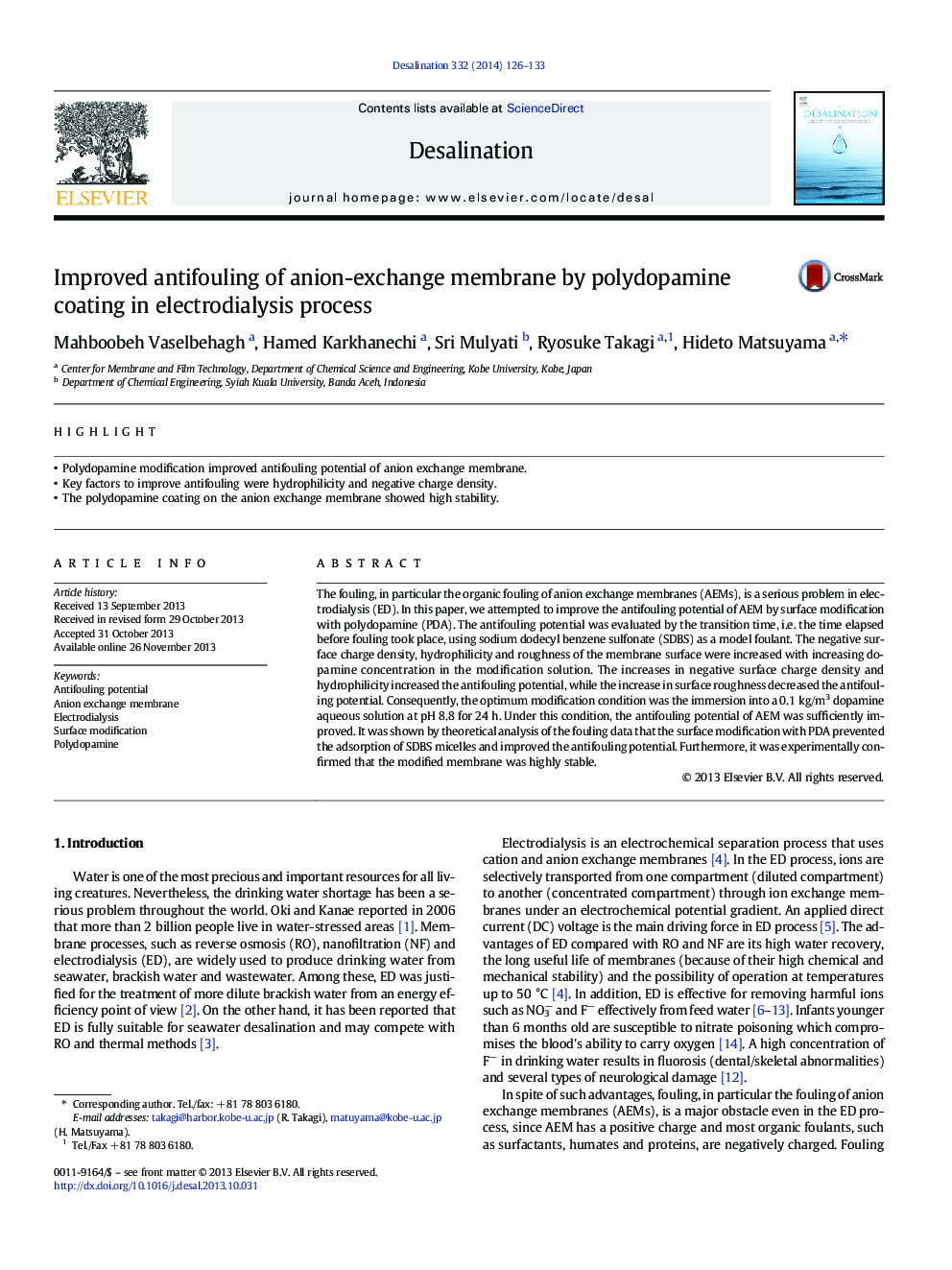| Article ID | Journal | Published Year | Pages | File Type |
|---|---|---|---|---|
| 623581 | Desalination | 2014 | 8 Pages |
Highlight•Polydopamine modification improved antifouling potential of anion exchange membrane.•Key factors to improve antifouling were hydrophilicity and negative charge density.•The polydopamine coating on the anion exchange membrane showed high stability.
The fouling, in particular the organic fouling of anion exchange membranes (AEMs), is a serious problem in electrodialysis (ED). In this paper, we attempted to improve the antifouling potential of AEM by surface modification with polydopamine (PDA). The antifouling potential was evaluated by the transition time, i.e. the time elapsed before fouling took place, using sodium dodecyl benzene sulfonate (SDBS) as a model foulant. The negative surface charge density, hydrophilicity and roughness of the membrane surface were increased with increasing dopamine concentration in the modification solution. The increases in negative surface charge density and hydrophilicity increased the antifouling potential, while the increase in surface roughness decreased the antifouling potential. Consequently, the optimum modification condition was the immersion into a 0.1 kg/m3 dopamine aqueous solution at pH 8.8 for 24 h. Under this condition, the antifouling potential of AEM was sufficiently improved. It was shown by theoretical analysis of the fouling data that the surface modification with PDA prevented the adsorption of SDBS micelles and improved the antifouling potential. Furthermore, it was experimentally confirmed that the modified membrane was highly stable.
